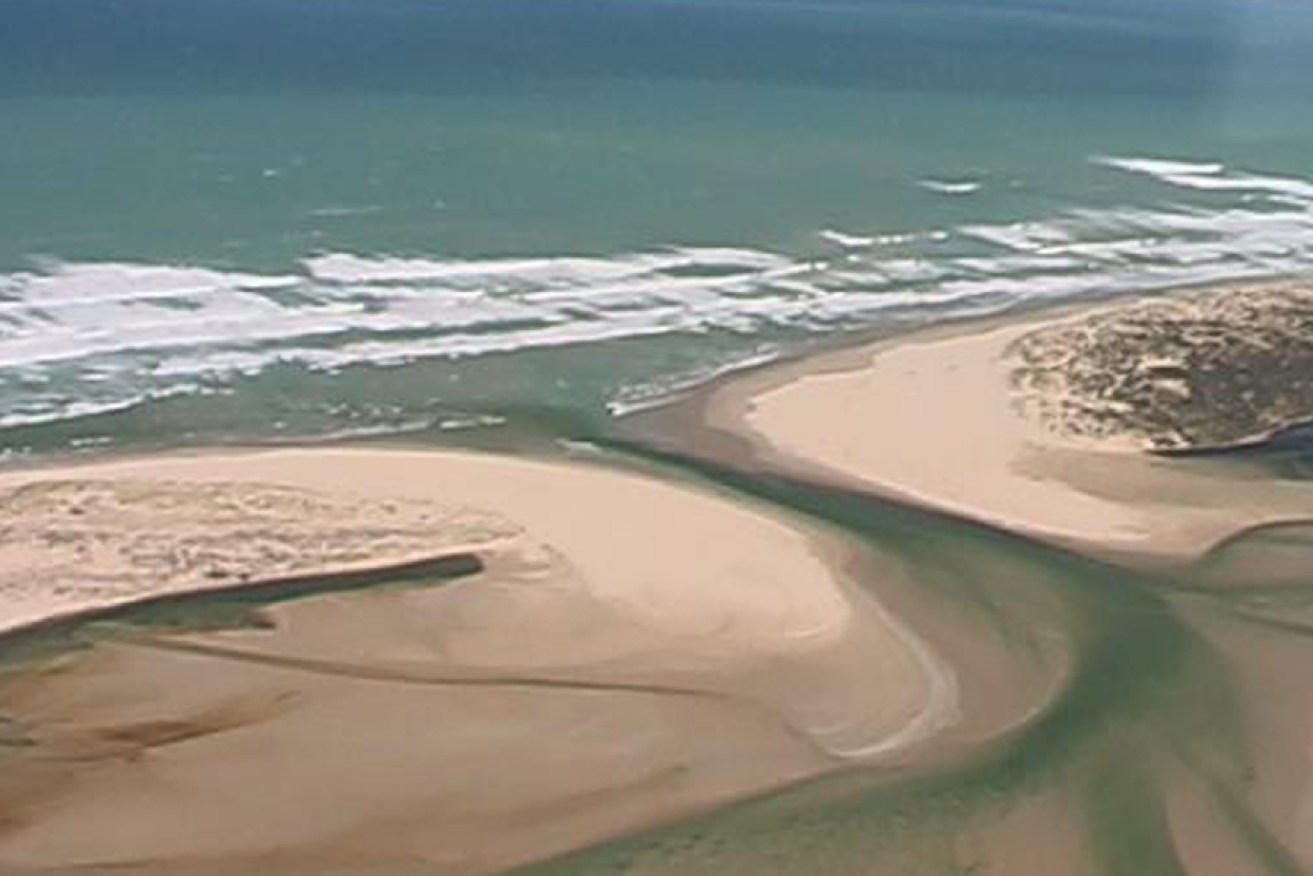Heavy flows keep Murray mouth open
The State Government is decommissioning one of the dredges used to keep the mouth of the River Murray open, with high flows reducing the need for human intervention where the river meets the ocean.


The Murray Mouth. Photo: AAP
Environment Minister Ian Hunter said this morning that high and increasing flows along the river into South Australia had scoured sand from the Murray Mouth and flushed it seaward.
Dredging was required to keep the river mouth open during the devastating Millennium Drought, and also from January last year due to low flows along the Murray.
But from today one of the two dredges that had been removing sand since January 2015 will be decommissioned for three months. The Government is also considering the future of the second dredge, which will continue operating for the time being between the Goolwa and Tauwitchere channels. The dredge’s continued operation will be assessed after the peak of the flood flow has passed through the mouth, likely in late December or early January.
Hunter said the high unregulated flows along the Murray would enable the river to discharge salt and other nutrients out to sea.
“The high flows have helped keep the mouth open and maintain a healthy river system, which is a great result for the magnificent RAMSAR-listed Coorong and Lower Lakes environment,” Hunter said.
“Maintaining an open mouth is a key objective under the Murray-Daring Basin Plan, and dredging is considered the most effective method of keeping the Mouth open. However when high unregulated flows are received, nature can take over.”
It’s a bittersweet moment for former Lower Lakes dairy farmer Lesley Fisher, who was a prominent campaigner for local communities during the long drought from 1996 to 2010.
Fisher retired three years ago, handing over the business to her sons, and says she remains broken-hearted by the environmental damage and personal trauma wrought by the drought.
“This is where my roots are,” she told InDaily. “Seven generations. And to see a lake out there and what was happening to the Coorong… it felt like my heart was being wrenched out.
“I went out onto the lake (Albert) on my quad bike, and the wind was howling. This was meant to be a lake? I thought: ‘who can I talk to about this? How can I describe it?’”
While she is pleased that high flows have reduced the need for dredging, she says the changing weather shows the vulnerability of the country, and those who work the land, to the vagaries of nature, and also to the priorities of those further up the river system.
“Droughts and floods – we can’t stop that,” she said.
“Whatever happens, Mother Nature is going to be the winner.”
However, she adds quickly: “Sometimes she needs help”.

The drought ravaged River Murray at Goolwa in 2008.
Fisher says she isn’t convinced governments have got the right plan for the Murray that will ensure the environment and the communities at the end of the system will be adequately protected when drought inevitably returns.
“I don’t think we ever will (get it right),” she says. “Seasons are so variable now. You can’t put a figure on any of that because seasons are always changing.”
She also notes that heavy rains are causing problems for farmers in different parts of the country, saying she felt for farmers in NSW who have recently had crops destroyed by flooding.
Fisher is excited by the new practices being implemented by her sons and other farmers in the district, utilising new technology to improve output.
As for her, though, she says she won’t be involved in another campaign.
“I can’t deal with it any more.”
When asked about the dredging though, the experienced, analytical farmer in her comes out again, and she warns the government that while heavy flows might be flushing the mouth, higher flows also mean more sand and silt coming down the river and potentially into the Coorong.
“It’s always changing,” she says.




